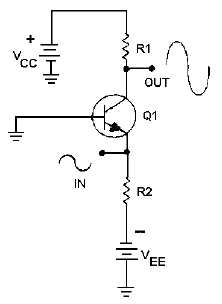1-6
You might hear that a vacuum tube is a voltage-operated device (since the grid does not need to draw
current) while the transistor is a current-operated device. You might agree with this statement, but both
the vacuum tube and the transistor are still current-control devices. The whole secret to understanding
amplifiers is to remember that fact. Current control is the name of the game. Once current is controlled
you can use it to give you a voltage gain or a power gain.
This chapter will use transistor amplifiers to present the concepts and principles of amplifiers. These
concepts apply to vacuum-tube amplifiers and, in most cases, magnetic amplifiers as well as transistor
amplifiers. If you wish to study the vacuum-tube equivalent circuits of the transistor circuits presented, an
excellent source is the EIMB, NAVSEA 0967-LP-000-0120, Electronics Circuits.
The first amplifier concept that is discussed is the "class of operation" of an amplifier.
AMPLIFIER CLASSES OF OPERATION
The class of operation of an amplifier is determined by the amount of time (in relation to the input
signal) that current flows in the output circuit. This is a function of the operating point of the amplifying
device. The operating point of the amplifying device is determined by the bias applied to the device.
There are four classes of operation for an amplifier. These are: A, AB, B and C. Each class of operation
has certain uses and characteristics. No one class of operation is "better" than any other class. The
selection of the "best" class of operation is determined by the use of the amplifying circuit. The best class
of operation for a phonograph is not the best class for a radio transmitter.
Class A Operation
A simple transistor amplifier that is operated class A is shown in figure 1-4. Since the output signal
is a 100% (or 360º) copy of the input signal, current in the output circuit must flow for 100% of the input
signal time. This is the definition of a class A amplifier. Amplifier current flows for 100% of the input
signal.
Figure 1-4.—A simple class A transistor amplifier.
The class A amplifier has the characteristics of good FIDELITY and low EFFICIENCY. Fidelity
means that the output signal is just like the input signal in all respects except amplitude. It has the same

